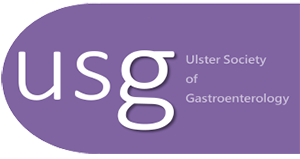Association of a DNA Damage Response Deficiency (DDRD) Assay with Prognosis in Resected Oesophageal and Gastric Adenocarcinoma
Authors
Turkington RC1, Knight LA1,2, Douglas R1, Stevenson L1, McManus D3, McCavigan A2, Walker SM2, Bornschein J4, MacRae S4, Noble F5, Underwood TJ5, O’Neill R6, McQuaid S7, Arthur K7, James J7, Eatock M1,8, Harkin DP3, Fitzgerald RC4, Kennedy RD1, 2Departments / Institutions
1 Centre for Cancer Research and Cell Biology, Queen’s University of Belfast, Belfast, Northern Ireland. 2 Almac Diagnostics Ltd, Craigavon, Northern Ireland 3 Department of Pathology, Belfast City Hospital, Belfast, Northern Ireland. 4 MRC Cancer Unit, University of Cambridge, Hutchison/MRC Research Centre, Cambridge, United Kingdom 5 Department of Surgery, University Hospital Southampton NHS Foundation Trust, Southampton, UK 6 Edinburgh Cancer Research Centre, University of Edinburgh, Edinburgh, UK 7 Northern Ireland BioBank, Centre for Cancer Research and Cell Biology, Queens’ University Belfast, Belfast, Northern Ireland. 8 Northern Ireland Cancer Centre, Belfast City Hospital, Belfast, Northern Ireland.Publication Date
Autumn 2017Introduction
Current strategies to guide the selection of neo-adjuvant or adjuvant therapy in oesophageal and gastric adenocarcinomas (OAC/GAC) are inadequate.
Aims
We assessed a clinically validated 44 gene DNA Damage Response Deficiency (DDRD) assay to predict prognosis following neo-adjuvant DNA damaging chemotherapy (CT) in OAC and adjuvant CT or chemo-radiotherapy (CRT) in GAC.
Methods
Transcriptional profiling of 273 formalin fixed paraffin embedded pre-treatment endoscopic OAC biopsies was performed using the Almac Diagnostics XcelTM array. Further validation was performed using a publically available dataset of 270 resected gastric cancers treated with adjuvant platinum-based CT, CRT or surgery alone at the Samsung Medical Centre, Seoul, Korea.
Results
A total of 66 OAC samples (24%) were characterized as DDRD positive with the remaining 207 samples (76%) being DDRD negative. DDRD assay positivity was associated with improved DFS (HR 0.58; 95% CI 0.36-0.93; p=0.024) and OS (HR 0.56; 95% CI 0.34-0.92; p= 0.023) following multivariate analysis. DDRD positive patients had a higher pathological response rate (p= 0.033).
For GAC, 132 samples (49%) were characterized as DDRD positive with the remaining 138 (51%) being DDRD negative. DDRD positivity was associated with improved DFS (HR 0.48; 95% CI 0.25-0.96; p=0.037) following D2 gastrectomy and adjuvant CT or CRT. DDRD status was not associated with DFS in the surgery alone cohort (HR 0.87; 95% CI 0.55-1.38; p=0.562).
Conclusion
The DDRD assay is strongly predictive of benefit from neo-adjuvant CT and oesophagectomy in OAC and gastrectomy and CT/CRT in GAC and can be applied to routine diagnostic material.
Latest News
Gastroenterology FK Meeting Provision and Challenges
Posted on: 2nd April 2021Latest Event
There are no up-coming events.E-Publications
Download our latest Documents


